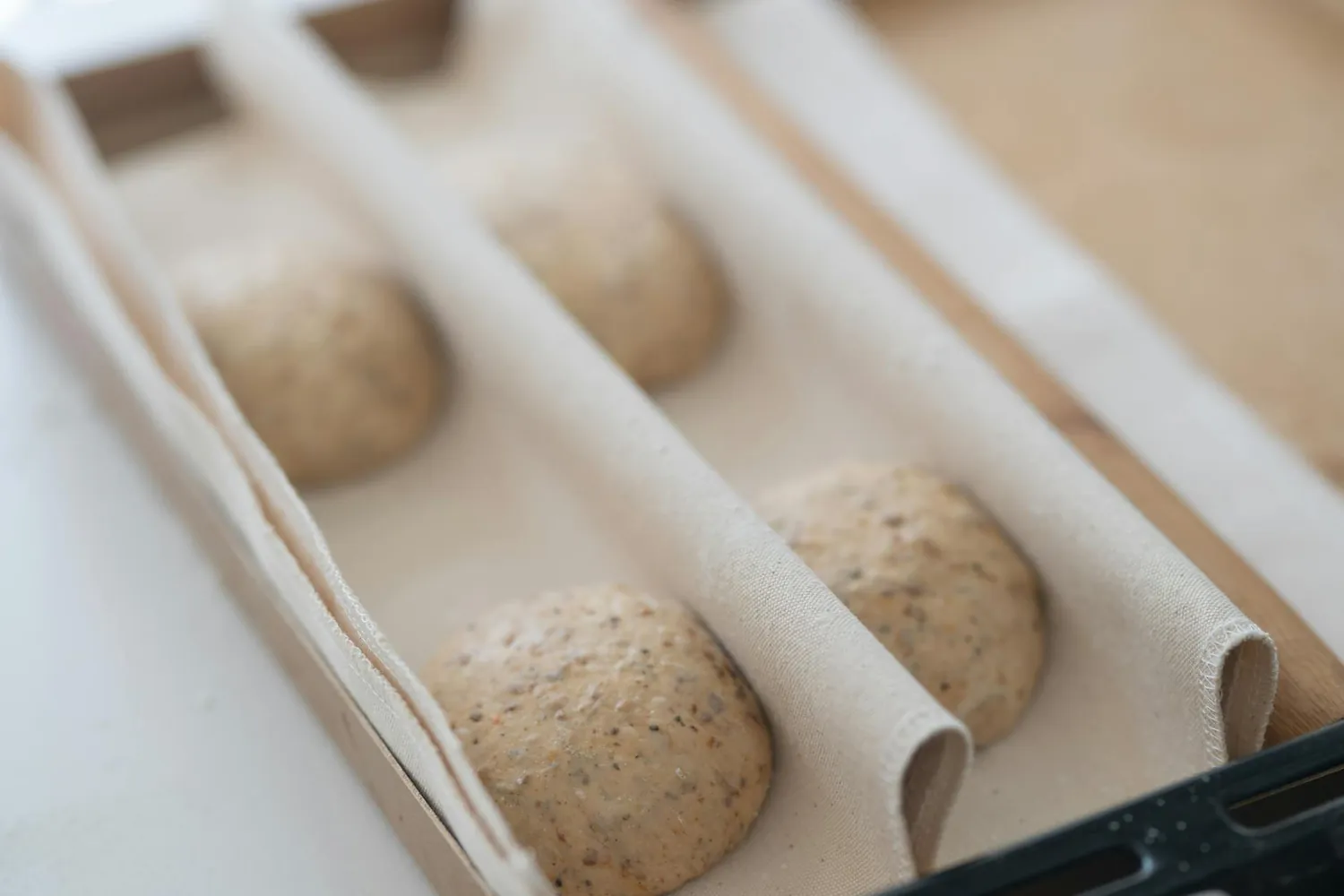Balancing Fermentation and Flavor: Perfect Your Sourdough Baking Skills

Understanding Sourdough Fermentation
At the heart of sourdough baking is the art of fermentation, a process that transforms simple ingredients into a complex and flavorful bread. Fermentation involves naturally occurring yeast and lactic acid bacteria consuming sugars in the dough, producing carbon dioxide gas and organic acids that give sourdough its distinctive taste.
The balance between fermentation time and flavor is key. Longer fermentation times can enhance flavor but may also lead to overly sour loaves if not managed properly. Understanding how to manipulate these variables can help you achieve your ideal sourdough flavor.
Essentials of a Great Sourdough Loaf
A perfect sourdough loaf is defined by its crusty exterior, chewy crumb, and a balanced tang. Achieving this requires attention to four essential elements: the starter, flour choice, hydration level, and fermentation control.
The Power of the Starter
Your starter is the heart of your sourdough. It consists of flour and water, fermented by wild yeast and bacteria. Feeding your starter regularly with fresh flour and water keeps it active. A well-maintained starter should be bubbly, have a pleasant, slightly tangy smell, and rise predictably after each feeding.
- Tip: Use equal parts of flour and water by weight for consistency.
- Example: Feed your starter every 12 hours with 50g each of flour and water.
Choosing the Right Flour
The choice of flour can dramatically affect your bread's flavor and texture. Bread flour, with its higher protein content, offers more gluten strength for a good rise, while whole grain flours add depth of flavor.
- Blend for Best Results: Try mixing bread flour with whole wheat or rye flour for complexity without sacrificing structure.
Managing Hydration Levels
Hydration refers to the ratio of water to flour in your dough. Higher hydration levels can produce an open crumb but are more challenging to handle. A typical range for sourdough is 65-85% hydration.
High-hydration doughs create a moist interior, perfect for achieving the coveted open crumb structure.
Fermentation Control
Fermentation is about timing and temperature control. Cooler temperatures slow fermentation, allowing more complex flavors to develop over time without excessive sourness.
- Bulk Fermentation: This is the first rise where the dough doubles in size. Aim for 4-6 hours at room temperature or extend overnight in the refrigerator for deeper flavor.
Practical Sourdough Workflow
Here’s a simple framework to guide your sourdough baking process:
- Feed your starter until it’s active (bubbly and doubled in size).
- Mix your dough: Combine your starter with flour and water; let it rest for 30 minutes (autolyse).
- Add salt: After autolyse, incorporate salt which strengthens gluten structure.
- Kneading: Use the stretch-and-fold method every 30 minutes over a two-hour period to build strength.
- Bulk Fermentation: Allow the dough to rise until it has nearly doubled.
- Shape: Gently shape the dough and transfer it to a proofing basket.
- Final Proof: Let it proof at room temperature for about 1-2 hours or refrigerate overnight.
- Bake: Preheat your oven with a Dutch oven inside, bake the dough covered initially, then uncover for the final browning.
Troubleshooting Common Issues
Dough Too Sticky
This often results from excessive hydration or insufficient gluten development. If your dough feels too wet and sticky, consider reducing water slightly or increasing fold repetitions during bulk fermentation to strengthen it.
Dense or Uneven Crumb
A dense crumb can indicate underproofing or insufficient kneading. Ensure your dough doubles during bulk fermentation and use adequate stretch-and-fold techniques.
Lack of Oven Spring
If your loaf doesn’t rise well in the oven, it might be due to overproofing or inadequate steam. Make sure to preheat your oven thoroughly and use a covered baking method like a Dutch oven to trap steam.
Developing Your Sourdough Style
Every baker develops a personal style with time. Experimenting with different flour blends, hydration levels, and fermentation times allows you to craft a loaf that suits your taste preferences perfectly.
- Flavor Variations: Add-ins like olives, nuts, or dried fruits can introduce new flavors.
The journey of sourdough baking is one of patience and practice, but with these techniques, you're well on your way to mastering the balance between fermentation and flavor. Happy baking!
